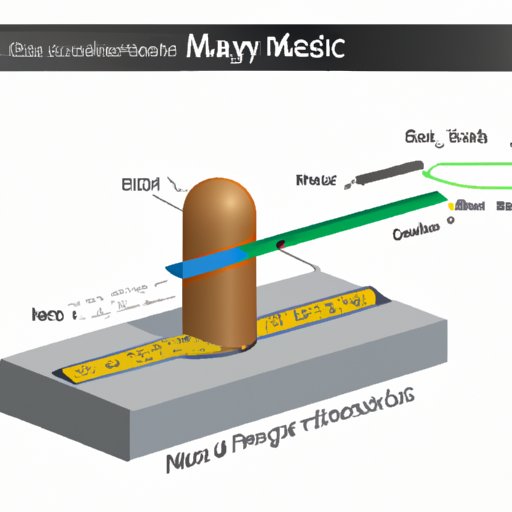
Introduction
Understanding how to calculate mass from weight is an essential concept for anyone interested in physics, engineering, or everyday life. Knowing how to convert weight to mass can help individuals accurately measure quantities and solve problems related to force and motion. This article will provide a step-by-step guide to calculating mass from weight, practical examples, formula explanation, comparison with weight, and other useful tips.
What is Mass and Weight?
Mass and weight are often used interchangeably, but they are not the same thing. Mass refers to the amount of matter or substance in an object, while weight is the force exerted on an object by gravity. Mass is measured in kilograms(kg), while the weight is measured in Newtons (N).
It is important to distinguish between the two concepts because weight can vary depending on the gravitational force, while mass remains constant. For instance, an object that weighs 100N on earth would weigh less on the moon, whereas its mass would remain the same. Understanding this distinction is key to accurately interpreting measurements and calculating forces.
A Step-by-Step Guide
Calculating mass from weight is a simple process that involves using the equation:
Mass = Weight / Gravitational force
To calculate mass:
- Measure the weight of the object in Newtons(N)
- Determine the gravitational force in Newtons/kg. On earth, this is 9.8 N/kg, while on other planets, it varies. You can find the gravitational force value in scientific books, online, or by contacting experts in the field.
- Divide the weight of the object by the gravitational force value to obtain the mass value in kilograms
For instance, if you have an object with a weight of 500N, on earth (g=9.8N/kg), the mass is:
Mass = 500N/9.8N/kg = 51.02 kg
Example-Based
Let’s illustrate the concept of calculating mass from weight with some practical examples. If you were asked to find the mass of a 1000N elevator suspended by a cable, you would first determine the gravitational force and then divide the force by the gravitational force. If the gravitational force is 9.8N/kg, then the mass would be:
Mass = 1000N/9.8N/kg = 102.04 kg
Another example is measuring the mass of a car. Suppose the car’s weight is 3000N, and the gravitational force is 9.8N/kg, then the mass would be:
Mass = 3000N/9.8N/kg ≈ 306.12 kg
Formula Explanation
The formula used to calculate mass from weight is:
Mass = Weight / Gravitational force
Here, we see that mass is directly proportional to weight and inversely proportional to the gravitational force. This means that as the weight increases, the mass increases, and as the gravitational force decreases, the mass increases.
The units in this formula must also be consistent; hence the weight must be in Newtons, and the gravitational force must be in Newtons/kg.
Comparison Article
Mass and weight are often confused, but they are different concepts. Mass is a measure of the quantity of matter in an object, while weight is the force exerted on the object by gravity. The mass of an object is constant and does not depend on the gravitational force, while the weight changes with the gravitational force. Mathematically, weight can be calculated by multiplying mass by gravitational force:
Weight = Mass x Gravitational force
Infographic-Based
Infographics and diagrams are excellent tools for visually explaining the concept of calculating mass from weight. Diagrams can include illustrations of the forces acting on an object and how to break them down to find the mass value. Infographics can outline the steps involved in calculating mass from weight, making them easy to follow and understand. Infographic examples can include weather maps indicating the weight, the mass of objects, or visual scales demonstrating the conversion process.
Conclusion
In conclusion, understanding how to calculate mass from weight is a crucial concept across various fields. By knowing the difference between mass and weight and the formula for calculating mass, individuals can measure quantities, solve problems related to force and motion and accurately interpret measurements. Knowing when and how to apply this concept can be beneficial in everyday life and other applications.
Remember, to calculate mass, you must measure the weight, determine the gravitational force, and divide the weight by the gravitational force. Always ensure that your units are consistent, and you understand the distinction between mass and weight. With these simple steps, you can confidently calculate mass from weight and interpret measurements to better understand the physical world around you.





